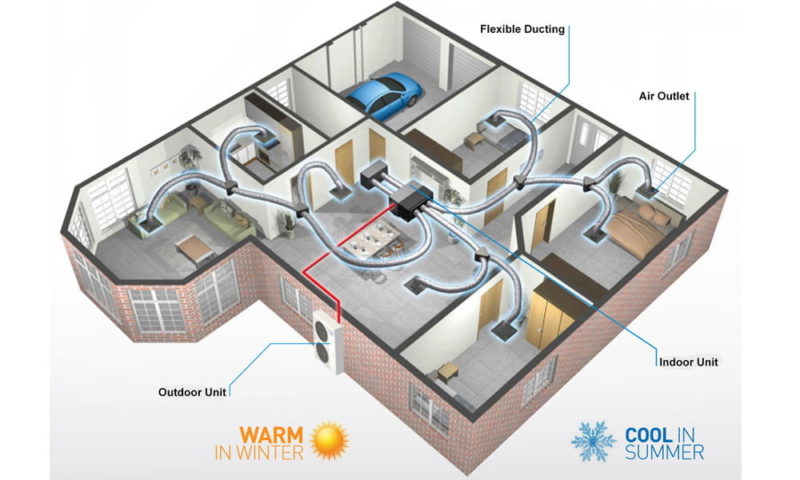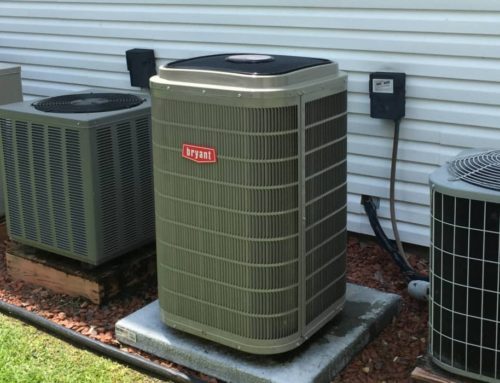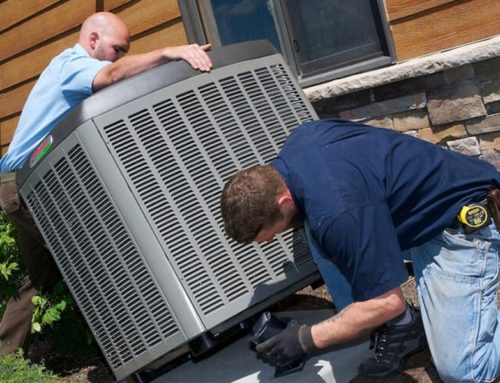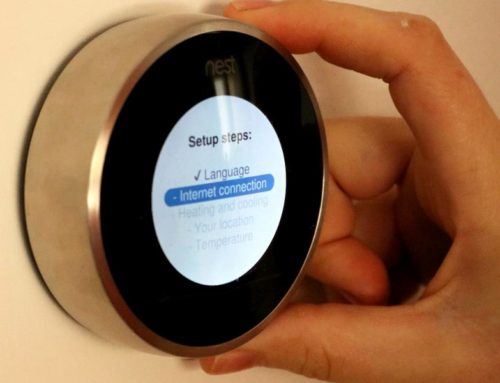Central A/C systems redistribute icy air thru a combination of supply and return vents. Supply vents transfer chilled air from the A/C unit to the living space. That chilled air becomes hotter as it passes thru the living space; then it moves back to the central A/C thru vents.
Air conditioners help to dehydrate the external air, but in very damp environments or in living spaces where the A/C is way too large, it might not attain low humidity levels. Utilizing a dehumidifying unit in your air-conditioned living space will elevate the use of power, both for the dehumidifying unit itself and because the A/C will need more electricity to chill your living space. A superior substitute here is a passive dehumidification system, since it can be a retrofit add-on to a good number of current systems.
In case you have a central A/C system set up in your house, set the fan to turn off concurrently with the compressor. Normally, this can be done by turning the «auto» mode in the fan settings. Let us put it another way — don’t use the central fan to provide air distribution, instead use circulation fans in separate rooms.
Different Kinds of Central A/C units
There exist only two types of a central A/C unit – split system unit and ductless system unit.
- Split Ductless Systems.
Here, all three key components (more on that later) are all stored in a solitary cabinet. That cabinet is normally placed on the rooftop or on the concrete pad near the building’s underpinning. This kind of A/C unit is likewise utilized in smaller office-style structures. Air-supply and air-return vents come from inside thru the building’s external wall or rooftop to link with the ductless A/C, which is typically positioned outdoor. Ductless system unit frequently contains electric heater coils. This mixture of A/C and central heater abolishes the necessity for an isolated heater at home.
- Split System Units.
Here, an outside steel cabinet is comprised of the capacitor and pump while an interior cabinet includes the evaporator. Numerous split system units have interior cabinet which also has a heater. The A/C evaporator core is fitted into the cabinet or main supply vent of that heater. In case the house already has a heater but no A/C, this unit is the single most cost-effective kind of A/C to set up.
How AC Works
When the temperature sensor prompts the A/C system to decrease air temperature, it sets off a chain of events.
Firstly, the air handler turns on, pulling in air from different parts of your living space via return vents. This air goes thru a filter(s) to detach aerial particles (dirt and fluff, as an example). Actually, state-of-the-art filters might eliminate microscopic contaminants too. After that, air is sent to a supply duct thru which if finds its way into the living space.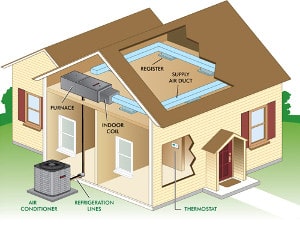
The question of how does the evaporator core lowers its temperature to begin with is highly important. You see, that’s where refrigeration enters the picture.
Every A/C system has these three key parts: compressor, evaporator, and condenser. As mentioned before, with a regular split-style system, everything but the evaporator is placed in an exterior unit. The aforementioned competent itself is situated on or in the air handler. When we talk about a split ductless system, it should be mentioned that all key parts are contained within a solitary outside unit that might be placed on a concrete pad near the building’s underpinning or on a rooftop.
Coolant travels thru copper tubes that connect evaporator with a condenser. This coolant takes in and puts out hotness as the temperature drops down or goes up, fluctuating between liquid and air before turning back into liquid. It’s worth noting that the coolant gets really, well, cool once it starts to travel thru the interior coil.
Whilst air handler moves hot air thru the core, coolant soaks up so much warmth from the air that it turns into vapour. As vapour, it moves to the outside pump, that compresses it and allocates it via the outside coil. At that moment, it ditches additional warmth with some assistance from the coils. Compressor fan likewise provides assistance in disintegrating the unnecessary hotness. The coolant then goes thru a small yet handy piece of equipment which turns it into a cool liquid, which comes back to the inside core. Consequently, the sequence continues.
Key Aspects for Selecting the Perfect Central A/C
- Dimensions
As you some of our loyal readers know, A/C unit’s chilling capabilities can be linked to its Btu number. Please take your time to read that post for additional information regarding all the needed Btu calculations.
- Efficacy
Here we’re talking about how much actual «chilling» the item provides for each W of electrical energy consumed. We suggest looking at Seasonal energy efficiency ratio specified by the manufacturer.

Interestingly enough, the lowest permitted ratio for a split-system A/C nowadays is fourteen and that’s why we advise you to look for items with a SEER rating of fifteen or above.
- Upkeep
There are all kinds of service plans which bring together routine examinations and discounted repair work, along with a hefty warranty.
- Setback thermostats
Appropriate usage of setback thermostats could potentially decrease your electricity bill by approximately 20%.
- Modernizing an already-purchased system
In case you are upgrading your A/C unit, do not take for granted the idea that you have to purchase the similarly-sized option. Any alternations you have made to increase your house’s power efficacy, for instance modernizing your windows or insulating your attic, can decrease your air-conditioning requirements. Then again, in case you have more space now, you may want something more powerful.

